Hurricane Helene caused flash floods, mudslides and tornadoes as it moved inland after hitting Florida's Gulf Coast, with winds of up to 140 mph.
The devastation from Tropical Storm Helene stretched nearly 800 miles from South Florida to the Appalachian Mountains on September 27.
The storm left deadly damage across four states. Officials said at least 17 people were killed in South Carolina, including two firefighters who died when their vehicle was crushed by a tree before sunrise.
Another 15 people were killed in Georgia, said Garrison Douglas, a spokesman for Georgia Governor Brian Kemp.
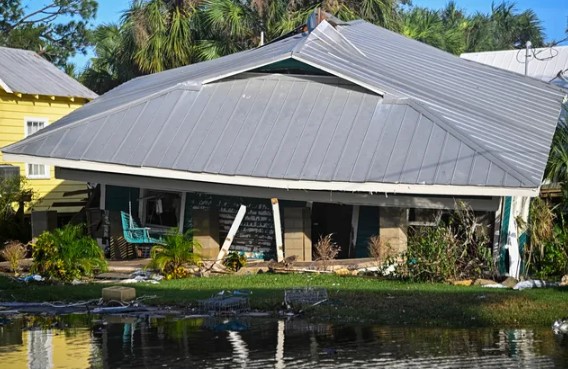
A house in Florida collapsed due to Hurricane Helene (Photo: AFP/VTV)
Five people died in Florida's Pinellas County, which includes the Tampa Bay area, including two drownings. Several deaths were linked to trees falling on homes.
Among the dead were several children: a 4-year-old girl died in Claremont, North Carolina, in a car crash amid heavy rain; and a 7-year-old boy and a 4-year-old girl died when a tree fell on a home in Washington County, Georgia.
Tornadoes hit several areas, including one in Nash County, North Carolina, that left four people seriously injured.
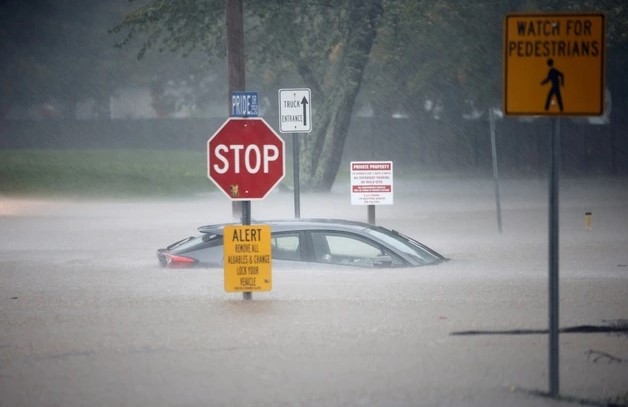
Streets flooded by storm Helene. PHOTO: REUTERS/Thanh Nien newspaper
Hurricane Helene, which devastated Florida and the southeastern United States, has killed at least 40 people, US officials said on September 27. Research firm Moody's Analytics estimated that Helene will cause property damage of about 15-26 billion USD.
Authorities predict dangerous impacts even as the storm weakens, as it continues to cause catastrophic flooding.
Roads, homes and businesses were flooded on September 27 after Hurricane Helene made landfall near Florida's capital Tallahassee overnight and raced north, leaving millions of homes without power.
The US National Hurricane Center (NHC) said the storm "is still causing historic and catastrophic flooding" and warned of flash floods in Atlanta, Georgia, as well as in North Carolina, South Carolina and Tennessee.
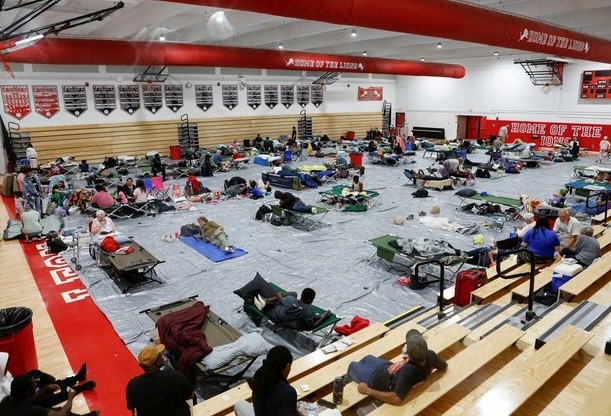
People evacuated to shelters in Florida. PHOTO: REUTERS/Thanh Nien newspaper
Officials in several states have warned those stranded to wait for rescue crews, as floodwaters may contain electrical wires, sewage, sharp objects and other debris. Some areas are only accessible by boat.
Hurricane Helene made landfall around 11:10 p.m. on September 26 in Florida's sparsely populated Big Bend region, a collection of fishing villages and resorts where the state's Panhandle and peninsula meet.
Social media users were shocked to see video showing torrential rains falling on Perry, Florida, near where Hurricane Helene made landfall.
Winds ripped the cladding off buildings that were almost completely dark. A local news station recorded footage of one house being overturned.
Forecasters have urged residents to prepare for a “nightmare” scenario of a 20-foot (6-meter) storm surge, a vast wall of water being pushed inland as the storm approaches. Drone video shows collapsed and damaged homes in the Florida community of Steinhatchee, while areas hit by severe storm flooding include Florida’s Tampa Bay.
Climate expert Andra Garner, from Rowan University in New Jersey (USA), said that Helene passed through warm waters in the Gulf of Mexico, which partly explained the storm's rapid increase in intensity. Some experts have previously said that global warming makes the sea warmer and evaporates faster, making hurricanes more dangerous.
Minh Hoa (reported by Znews, Thanh Nien, VTV)
Source: https://www.nguoiduatin.vn/bao-helene-voi-suc-tan-pha-tham-khoc-khien-it-nhat-40-nguoi-thiet-mang-20424092808271923.htm



![[Photo] Hanoi morning of October 1: Prolonged flooding, people wade to work](https://vphoto.vietnam.vn/thumb/1200x675/vietnam/resource/IMAGE/2025/10/1/189be28938e3493fa26b2938efa2059e)




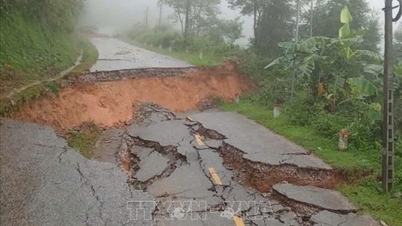

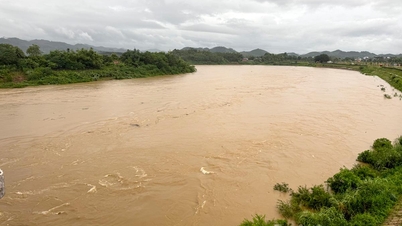













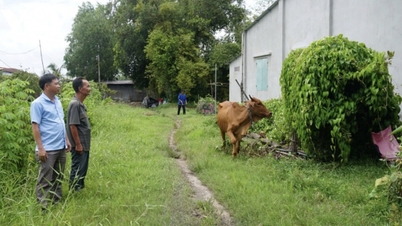





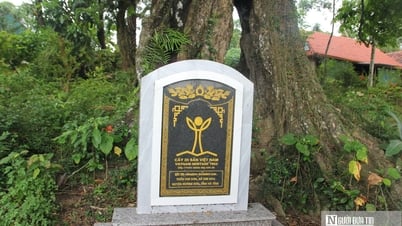


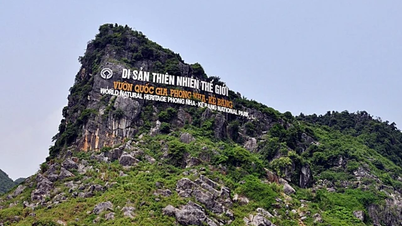

![[Photo] President Luong Cuong receives President of the Cuban National Assembly Esteban Lazo Hernandez](https://vphoto.vietnam.vn/thumb/1200x675/vietnam/resource/IMAGE/2025/9/30/4d38932911c24f6ea1936252bd5427fa)
![[Photo] Panorama of the cable-stayed bridge, the final bottleneck of the Ben Luc-Long Thanh expressway](https://vphoto.vietnam.vn/thumb/1200x675/vietnam/resource/IMAGE/2025/9/30/391fdf21025541d6b2f092e49a17243f)
![[Photo] The 1st Congress of Phu Tho Provincial Party Committee, term 2025-2030](https://vphoto.vietnam.vn/thumb/1200x675/vietnam/resource/IMAGE/2025/9/30/1507da06216649bba8a1ce6251816820)





































































Comment (0)